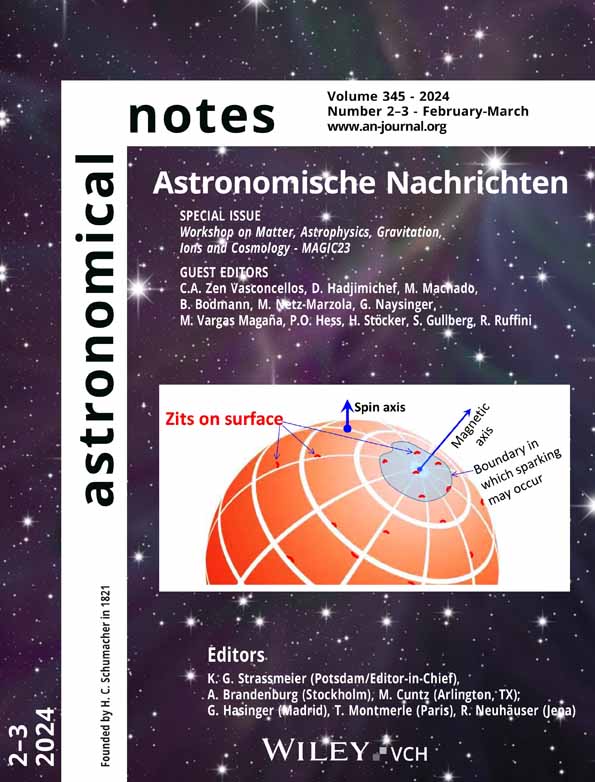Astrophysical approach to search for heavy neutrino decay
Abstract
Cosmic rays are a very valuable tool of multi-messenger astrophysics, as they provide a very different picture of the sky. During the past decades, a large number of active astrophysical objects in our Galaxy and beyond have been discovered through the detection of gamma-rays with Cherenkov telescopes. Cosmic rays, neutrinos have been successfully supplementing the astronomical view. Also, cosmic rays may offer to investigation of the elementary particle properties. Neutrino telescope detects the Cherenkov radiation generated in water or ice by the passage of relativistic charged particles produced by neutrino collisions with nucleons in the detector volume. Some alternative approaches have been proposed. One of them is using earth matter or mountains as a target volume for the conversion of neutrinos to leptons which then initiate extensive air showers (EAS) in the atmosphere, then showers can be detected by the Cherenkov telescope. Investigations with SHALON Cherenkov telescope have included observations of EAS from the sub-horizontal direction . Five EAS of ∼10 TeV energies were detected with SHALON from the sub-horizontal directions in the conditions with the zero expected number of showers. These events may be caused by the decay of a long-lived penetrating particle entering the atmosphere from the ground and decaying in front of the telescope. As a possible explanation, two scenarios with an unstable neutrino of mass GeV and m is discussed. Remarkably, one of these models has been proposed to explain an excess of electron-like neutrino events at MiniBooNE.




